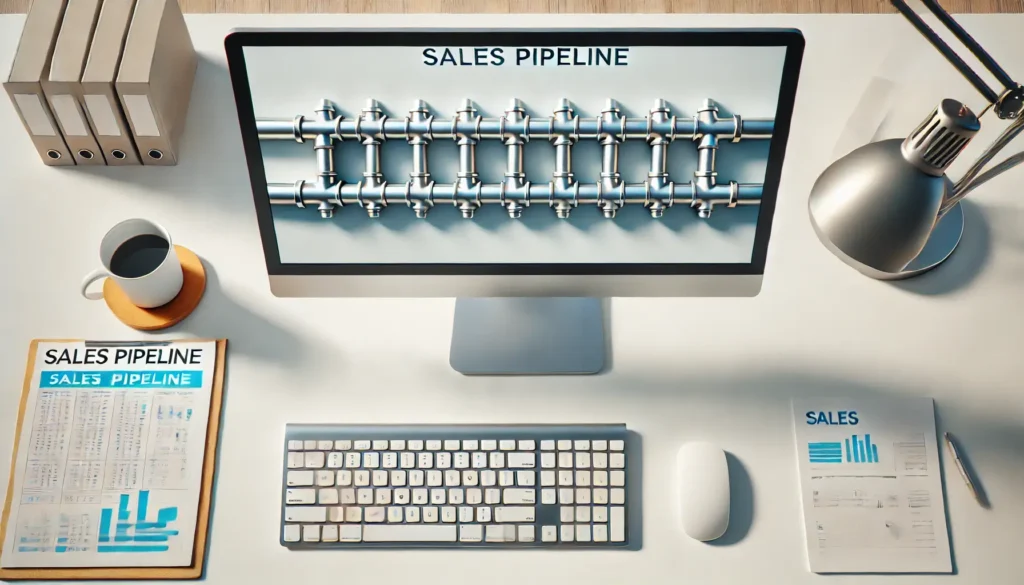At Planet Marketing, we understand how crucial a well-managed sales pipeline is to local business success. Whether you run a retail shop or a service-based company, having a clear and efficient sales process leads to more revenue, stronger customer relationships, and long-term growth. A solid sales pipeline brings structure to your sales efforts and helps you keep track of leads, prioritize actions, and improve your close rate.
This step-by-step guide will walk you through how to manage your sales pipeline effectively. You’ll discover how to define your pipeline stages, implement lead scoring, automate repetitive tasks, and close deals with confidence—without overwhelming your team or missing opportunities.
Step 1: Define Your Sales Stages
Start by clearly outlining the stages of your sales pipeline. These stages represent key milestones in the buyer’s journey and serve as a roadmap for guiding leads from awareness to purchase. A common structure includes stages like Lead Generation, Lead Qualification, Proposal, and Closing. Each stage should have specific actions, goals, and criteria for moving a lead forward.
For instance, during the Lead Qualification stage, your objective is to assess whether the lead has the authority, budget, and need to make a purchase. By defining these stages, you gain clarity on where each prospect stands and what steps are necessary to progress the relationship. Using a CRM system allows you to track these stages easily, helping you prioritize tasks and focus your efforts on the most promising opportunities. To dive deeper, visit our Planet Marketing blog on Sales Pipeline Management.
Step 2: Implement a Lead Scoring System

Not all leads are created equal. Some are more likely to convert than others, which is why implementing a lead scoring system is critical. Lead scoring assigns values to leads based on factors such as their behavior, engagement level, and demographic information.
A lead who has visited your website multiple times, signed up for a webinar, or downloaded a pricing guide likely has a higher intent to buy and should be prioritized. On the other hand, a lead who only opened one email might be placed in a longer nurture sequence.
Lead scoring ensures your team spends time on the right prospects. With Planet Marketing’s CRM, scoring is updated in real time using behavioral triggers and intent signals. This helps your team act faster and improve conversion rates.
Step 3: Automate Routine Tasks
Sales teams often spend a significant amount of time on repetitive tasks, such as sending follow-up emails, updating lead statuses, and scheduling appointments. These tasks, while important, can eat into valuable time that could be spent on selling. That’s where automation comes in.
With automation, you can create workflows that trigger emails, alerts, or task updates based on specific actions leads take. This ensures every lead receives timely and relevant communication without requiring manual effort from your team. Tools like Planet Marketing’s CRM help streamline these processes and keep your pipeline moving.
The result is greater efficiency, fewer missed opportunities, and more time for your salespeople to engage with qualified leads. For further inspiration, check out 5 Ways AI Employees Help Small Businesses Scale Faster.
Step 4: Track and Analyze Pipeline Metrics
You can’t improve what you don’t measure. That’s why tracking and analyzing key pipeline metrics is so important. The data provides insights into how well your sales process is performing and where improvements are needed.
Focus on metrics like conversion rates between stages, average deal size, deal velocity, and time spent in each stage. For example, if you notice leads frequently stall between Proposal and Closing, it may be a sign that your offers need refinement or that additional training is needed to address objections.
Using CRM dashboards, you can visualize these metrics and make informed decisions. The insights help identify bottlenecks, evaluate lead quality, and optimize your sales strategy to boost performance and revenue.


Step 5: Nurture Relationships with Personalized Outreach
Building strong relationships with your leads is key to moving them through the sales pipeline. Instead of sending one-size-fits-all messages, personalize your outreach based on each lead’s behavior, preferences, and pain points. This makes your communication more relevant and increases engagement.
If a prospect showed interest in a particular service, send them follow-up content tailored to that topic. If they attended a webinar, thank them and offer additional resources that align with their needs. The more personalized your approach, the more trust you build.
Planet Marketing’s CRM allows you to track interactions and segment your audience for targeted communication. It enables your team to create more meaningful conversations by understanding each lead’s journey, previous touchpoints, and preferences. This data-driven approach allows for timely follow-ups, relevant content delivery, and stronger engagement. With deeper segmentation, you can also tailor promotions and messages based on lead behaviors, industry, or pain points—improving the likelihood of conversion and building long-term trust with your prospects.
Step 6: Close Deals with a Clear Call to Action
When a lead is ready to buy, you must guide them clearly toward the finish line. That means using strong, specific calls to action (CTAs) that tell them exactly what to do next. Whether it’s “Schedule a consultation” or “Sign up today,” clarity is key.
Avoid vague requests like “Let us know if you’re interested.” Instead, offer direct instructions and remove barriers to conversion. Also, be prepared to address last-minute objections. Have testimonials, case studies, and ROI breakdowns ready to reassure prospects.
By combining a compelling CTA with a clear value proposition, you make it easier for leads to commit and complete the sale. Consider reinforcing your CTA with a limited-time offer or added incentive to create urgency. For example, offering a free trial or bonus service for early sign-ups can nudge hesitant prospects toward making a decision. Additionally, ensure your CTA aligns with the buyer’s journey stage. A softer CTA like “Get more information” may be more appropriate earlier in the process, while “Book your demo now” is better suited for warm leads closer to purchase. These nuanced adjustments can significantly increase your conversion rate.
Step 7: Continuously Refine and Optimize the Pipeline

A successful sales pipeline isn’t static—it evolves over time. As your business grows and customer behavior changes, your pipeline needs to adapt. That’s why it’s essential to regularly review and refine your process.
Look at your analytics to see which stages are performing well and which need improvement. Are leads getting stuck at one stage? Are certain sources delivering better-quality leads? Use these insights to adjust your strategy, rework messaging, and test new approaches.
To keep your sales pipeline high-performing over time, you need to treat optimization as an ongoing effort. This means building a habit of reviewing your process regularly—monthly or quarterly—and using data to inform updates. Watch for signs of friction in your pipeline, like long delays in specific stages or an increase in leads going cold. These could signal that it’s time to tweak your messaging, rework how leads are qualified, or shift focus to higher-performing channels. Consistency in reviewing and refining your pipeline ensures that your sales process stays aligned with changing customer expectations, market trends, and internal business goals.
Encourage feedback from your sales team—after all, they are the ones directly engaging with prospects. Their insights can help you understand challenges on the ground and refine your approach. Consider experimenting with A/B testing for different follow-up emails, CTAs, or lead qualification questions to determine what works best.
You should also audit your CRM setup to ensure all automations, tags, and scoring rules are still aligned with your current goals. Technology and customer expectations evolve, so your pipeline should evolve with them. Continuous optimization helps you stay competitive, increase conversions, and make smarter business decisions based on real-time insights.
Final Takeaway
An effective sales pipeline is one of the most valuable assets a local business can have. It helps you stay organized, prioritize leads, and close deals faster. By defining your stages, scoring leads, automating tasks, and personalizing communication, you lay the foundation for consistent growth.
At Planet Marketing, we specialize in helping local businesses build and optimize their sales pipelines with the right tools and guidance. Whether you’re starting from scratch or improving an existing system, we’re here to support your journey.
Ready to optimize your sales pipeline? Contact Planet Marketing today to learn how our tools and strategies can support your growth.
Looking for more insights? Don’t miss our article on How to Create a Sales Pipeline That Converts Leads into Customers.



